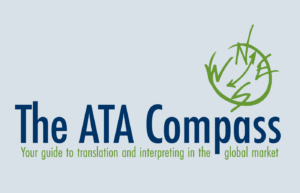(Bilingual) Help Wanted
Janet, a personnel manager at a fast-growing start-up, hoped to give her company a competitive edge in an international field by recruiting bilingual employees. She got some unexpected results.
Her first big surprise was discovering that many applicants who made no mention of language skills on their résumés reported being able to speak two, three, or sometimes even more languages, when asked about it in the interview. This made Janet wonder: how common is this hidden talent? So, she sent a questionnaire to her entire staff and was amazed to find that many of them were in fact multilingual.
However, not all of Janet’s discoveries were positive. As a start-up, the company was very interested in what other businesses were doing, and the plan was to have the new staff spend some of their time translating advertising and documentation from foreign competitors. Armed with that information, they then planned to reach out to potential clients in those countries. One of the new hires did well at the translation task, but the others, despite having described themselves as fluent, were so slow that the company’s bottom-line costs exceeded the price for outsourcing the same service. To make matters worse, the engineers found the translations hard to read. Meanwhile, a sales department recruit who had said in the interview that he was fluent in the language that his parents spoke at home, later told his supervisor that he was unable to make sales calls in that language.
There Is More to Language than Conversation
Janet had been operating under the common misconception that someone who is conversationally fluent in a second language will be able to do everything in that language that they can do in English. The truth is that, while about a quarter of Americans can hold a conversation in a foreign language, conversational fluency is only one of a broad range of language skills. Your 10-year-old nephew may speak English fluently, yet if you hand him your company’s year-end reports, the vocabulary and syntax will stump him before he has finished the first sentence. Likewise, being able to chat about the weather or sports in Spanish or Korean in no way means that you can speak business Spanish or technical Korean.
Even in situations that do not require any special jargon, such as telephone prospecting for sales leads, the ability to set the right tone and project confidence requires an exceptionally high level of linguistic skill. A person who has only spoken their second language at home with their family, or learned it during a college year abroad, is unlikely to have such mastery.
Skills Are Learned
The skills gap is even more pronounced when it comes to writing. While our high schools and universities do their best to instill good writing habits in their students, many of us have difficulty producing even an email that is completely free of errors. As you can imagine, it’s harder still to write well in a second language. In fact, unless you have used a language as your primary work or study language for many years, it’s nearly impossible to write at a level in keeping with corporate professionalism.
Another surprising linguistic fact is that even people who have mastered two languages, such as immigrants who began their careers abroad and have since settled into English, may not necessarily be good translators. Understanding what is written on the page and being able to choose the right words to recraft that same message in another language are two very distinct skills. Many years of study and practice, as well as a host of specialized tools and resources, are needed for professional translators to reach a level at which they can work efficiently and confidently. Asking an untrained staff member to take on translation work may be counterproductive and expensive. It may even involve serious risk in the case of documents with the potential for major business impact, such as contracts, user manuals, or advertising.
For similar reasons, because interpreters (who convey the spoken word) need very different skill sets than translators (who work with written text), even translators with years of experience will likely struggle to serve as an interpreter at an ordinary business meeting.
Lessons Learned
Janet wasn’t wrong in seeing bilingual recruiting as a tool to boost international competitiveness, but she needed more information to make good decisions. Rather than simply asking candidates if they spoke any other languages, she should have gone one step further and inquired about the specific tasks she was hoping to have them perform.
She learned some important lessons. If you want someone to review technical documents in a foreign language, it’s best to ask them up front if they feel confident reading such material in that language, not to mention what related experience or education they have to support that confidence. She also found that she needed to hire someone with foreign-language sales experience if that person was to make sales calls overseas. Likewise, relevant training and experience is a must for translations and interpreting.
Linguistic capital is a powerful addition to any international team. It can open windows of insight and doors of opportunity. A multilingual workforce can respond more quickly and flexibly to both opportunities and challenges. In fact, your company’s language skills could be your decisive edge, so it pays to get the right ones. By understanding your specific needs and diving deeper into the language skills of your staff and potential recruits, you’ll make the most of your “(Bilingual) Help Wanted” sign.
By Martin Cross
About the Author
Martin Cross is the president of Patent Translations Inc., serving law firms and patent departments in the U.S. and abroad. He is an active corporate member of the American Translators Association. The ATA represents over 10,000 translators and interpreters in more than 100 countries. Along with advancing the translation and interpreting professions, ATA promotes the education and development of language services providers and consumers alike.
ATA is Making News
ATA provides content for professional and trade publications to spread insight to a wide range of readers. This article appears in the following publications:
- Article Weekly (April 18, 2018)
- Energy Central (May 2, 2018)
- Advisor Magazine (June 8, 2018)
- Tree Care Industry (November 1, 2018)
Language Services Directory
Subscribe to The ATA Compass
Connect with The ATA Compass
Recent Posts
Buying Language Services
Guide to Buying Translation Services Translators help power the global economy, working with businesses, governments, non-profits and individuals. Translators work with the written word. The ATA Guide to Buying Translation…
Read MoreClient Assistance
Can I afford to hire a professional? You can’t afford NOT to. Poor translation and interpreting services can be disastrous for your business. See what’s at stake. Learn More What’s…
Read MoreWhat is a Certified Translation?
What are the basics of a certified translation? In the United States, anyone can certify a translation. A translator does not need to be certified in order to provide a…
Read MoreFind a Translator or Interpreter Near You
Searching for a Nearby Translator or Interpreter? Whether you require accurate document translations, real-time interpreting for an event, or specialized industry expertise, finding the right professional near you has never…
Read MoreThe ATA Compass
Want to reach more customers, grow your business, and improve your bottom line? The ATA Compass publishes articles and provides resources to show you how language professionals can help you…
Read MoreWhy Should I Hire a Professional?
It takes more than just the ability to understand two languages. Professional translators and interpreters have the education, experience, and expertise to understand the nuances in one language and transfer…
Read More






